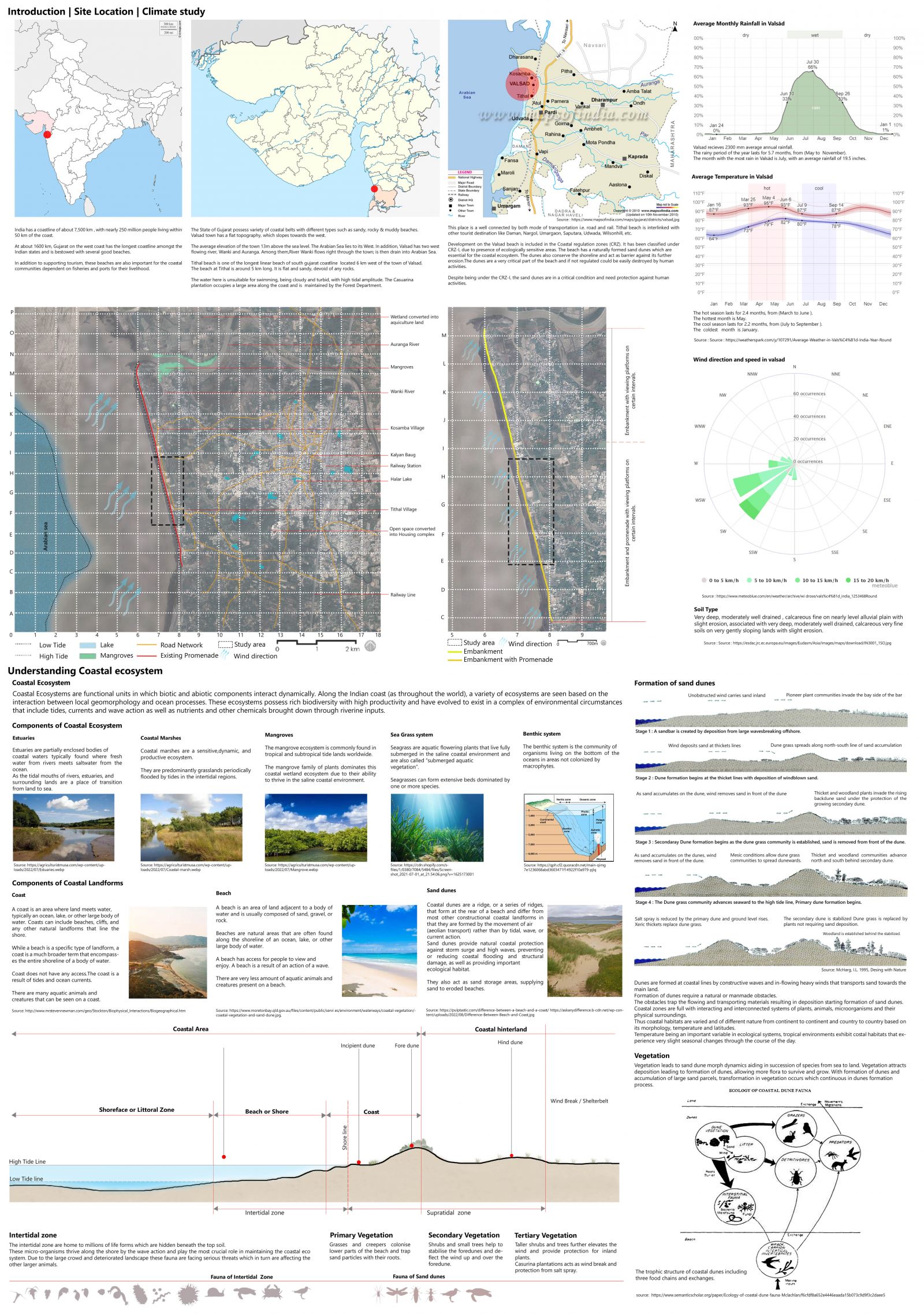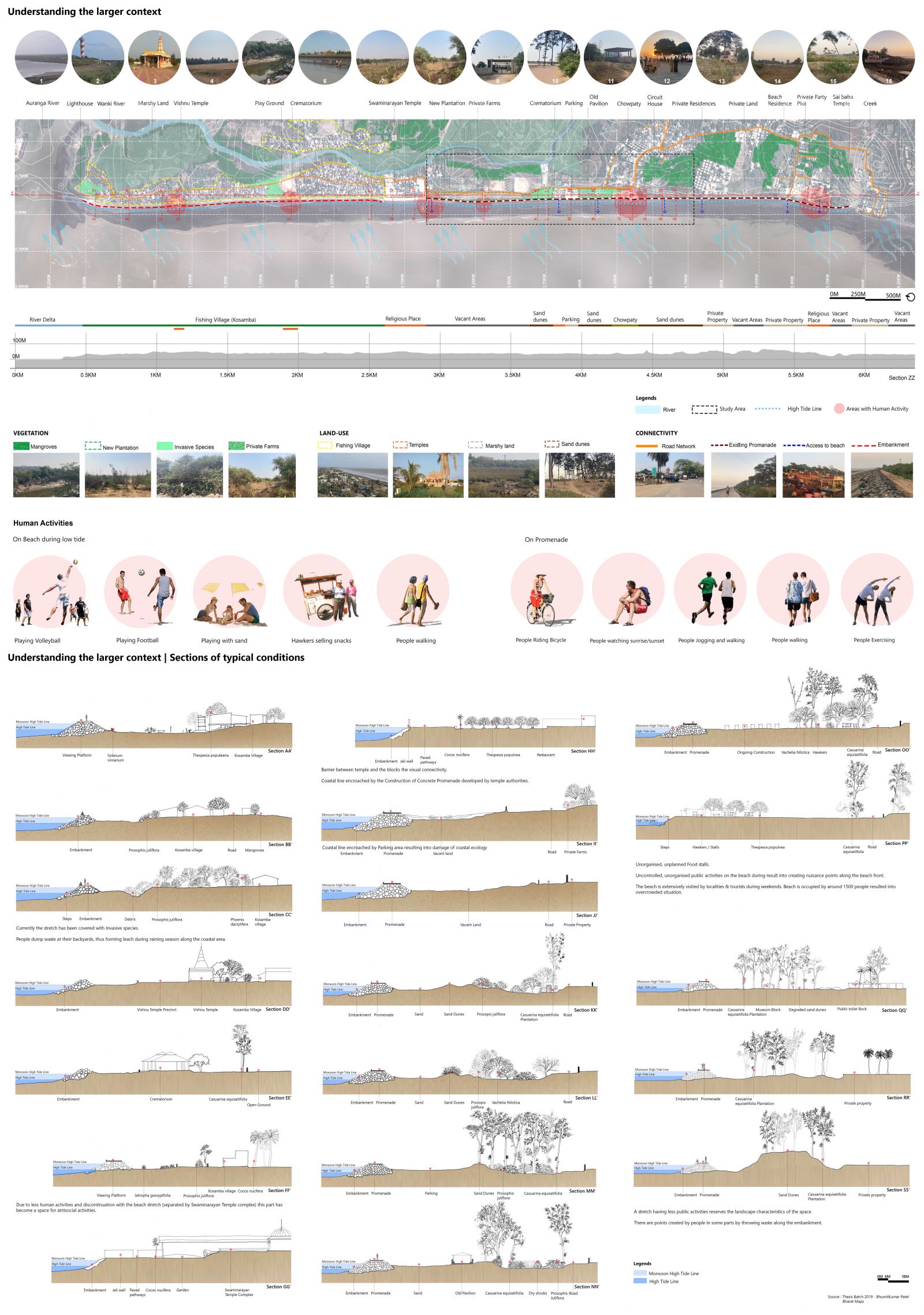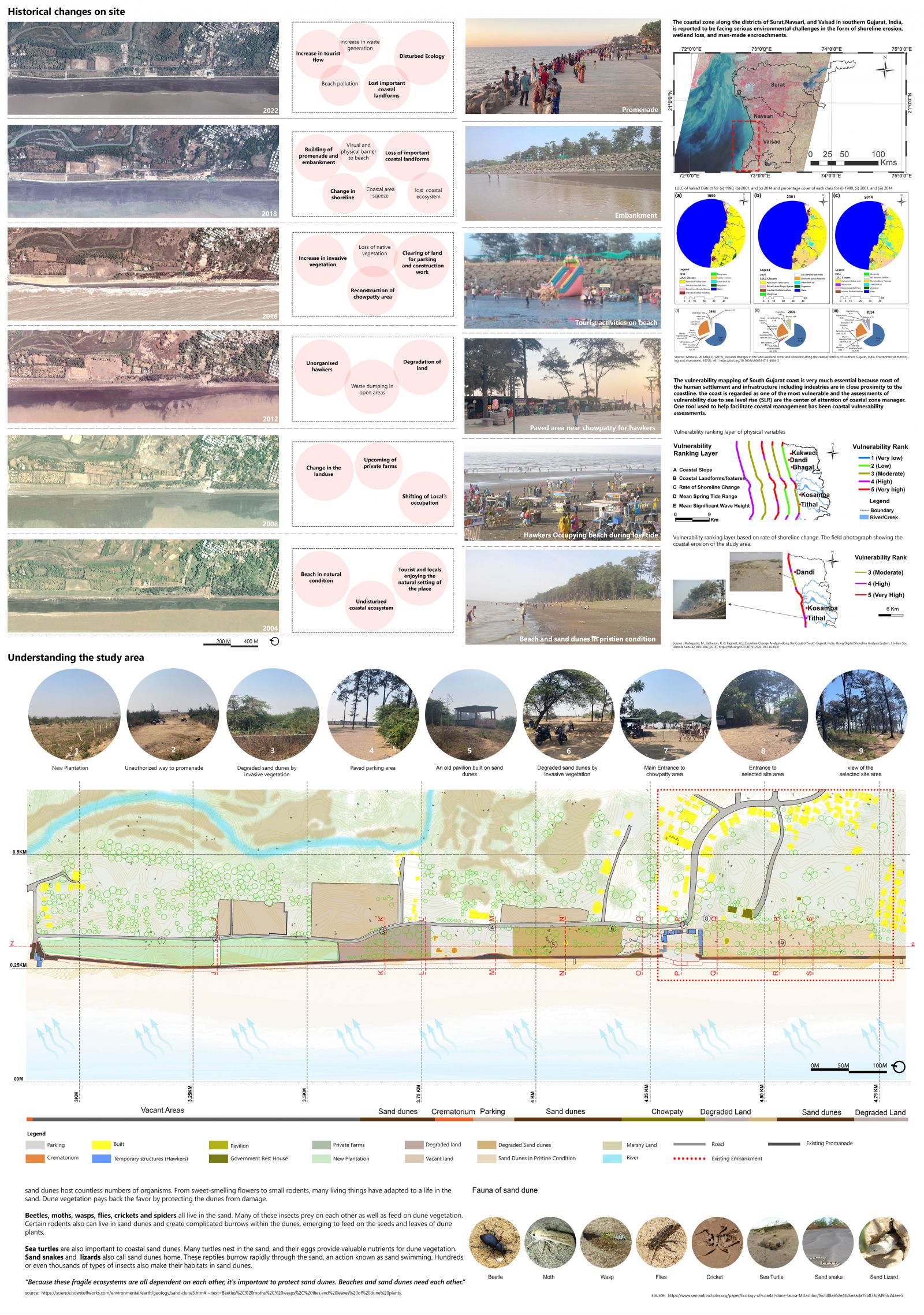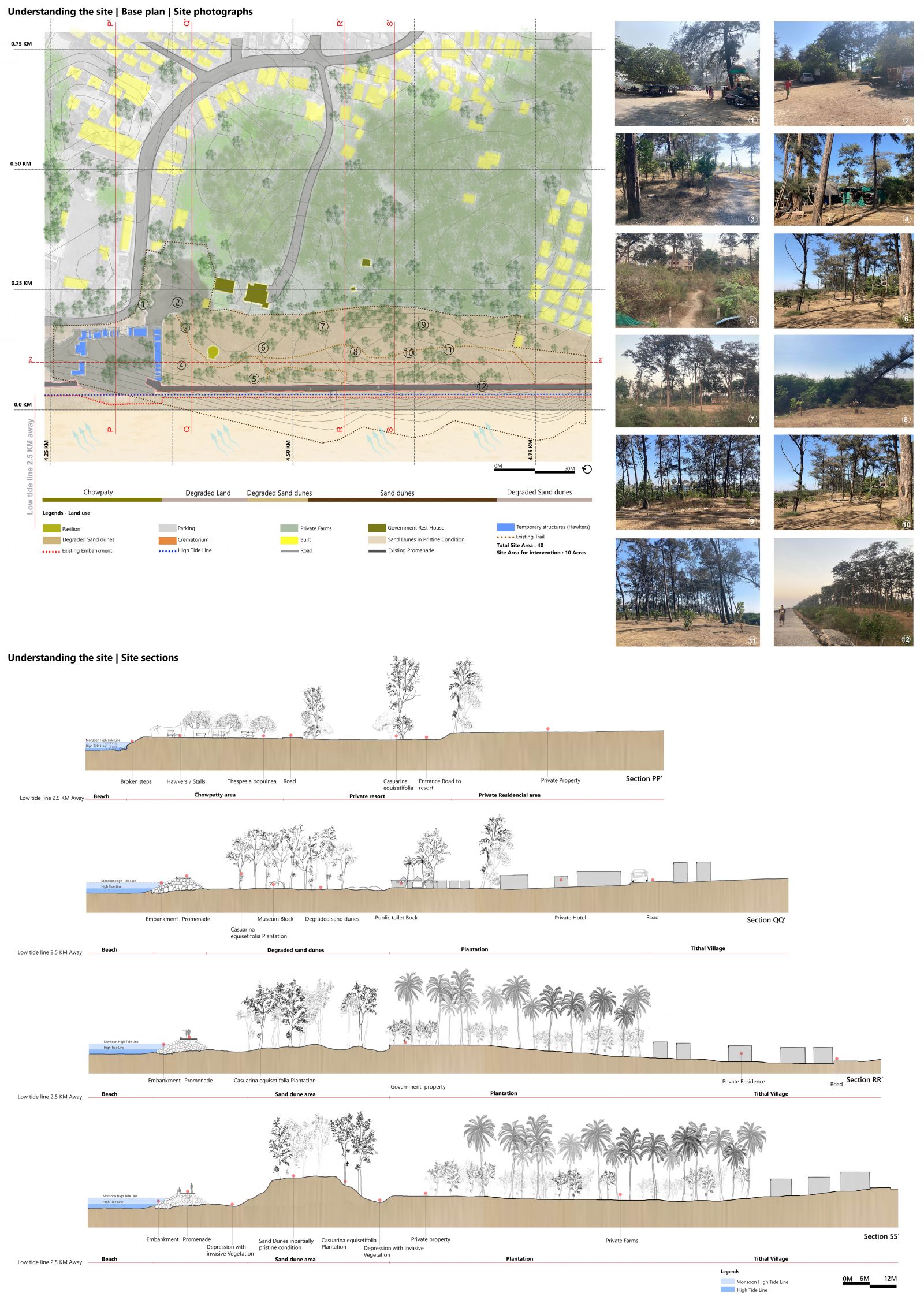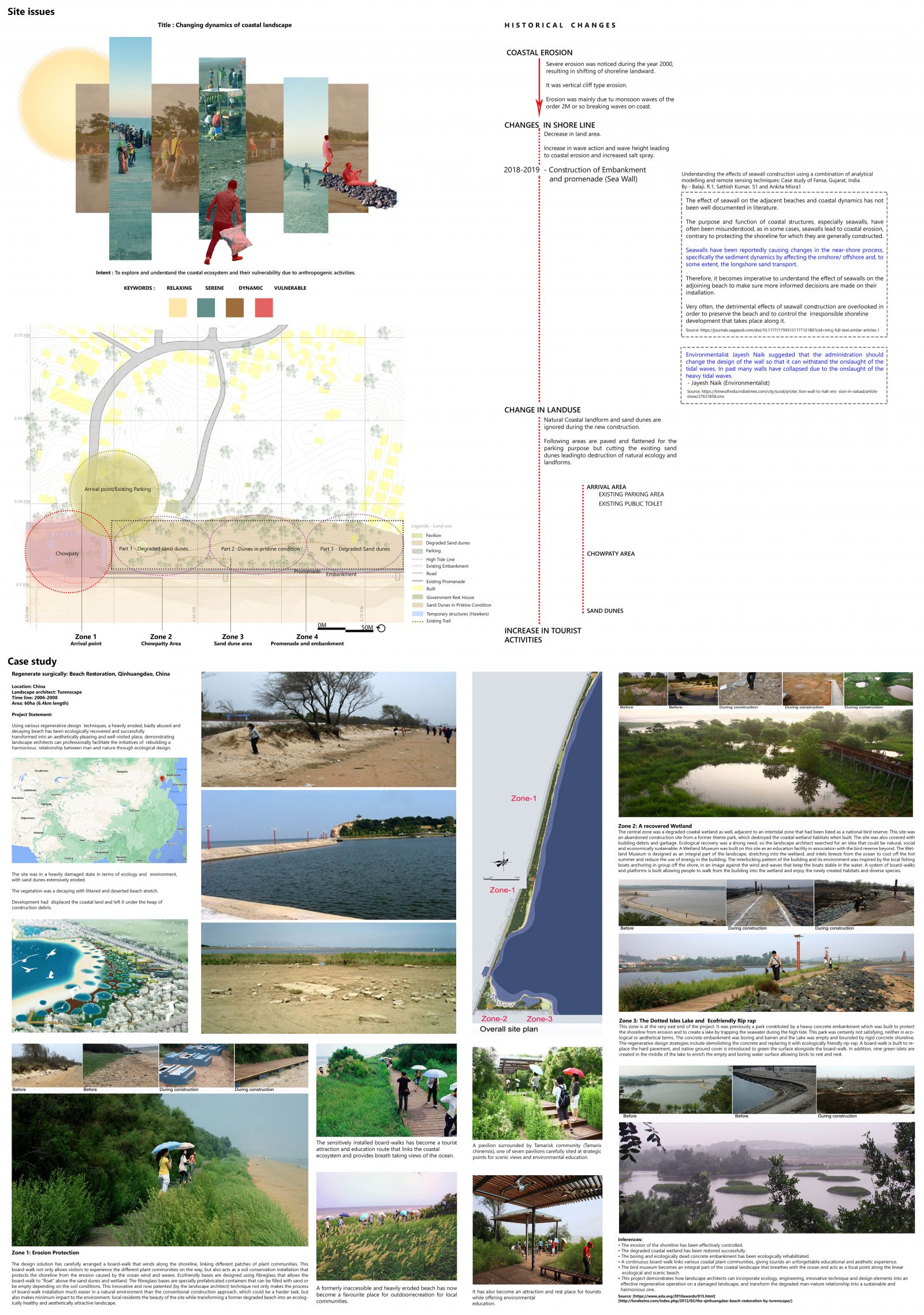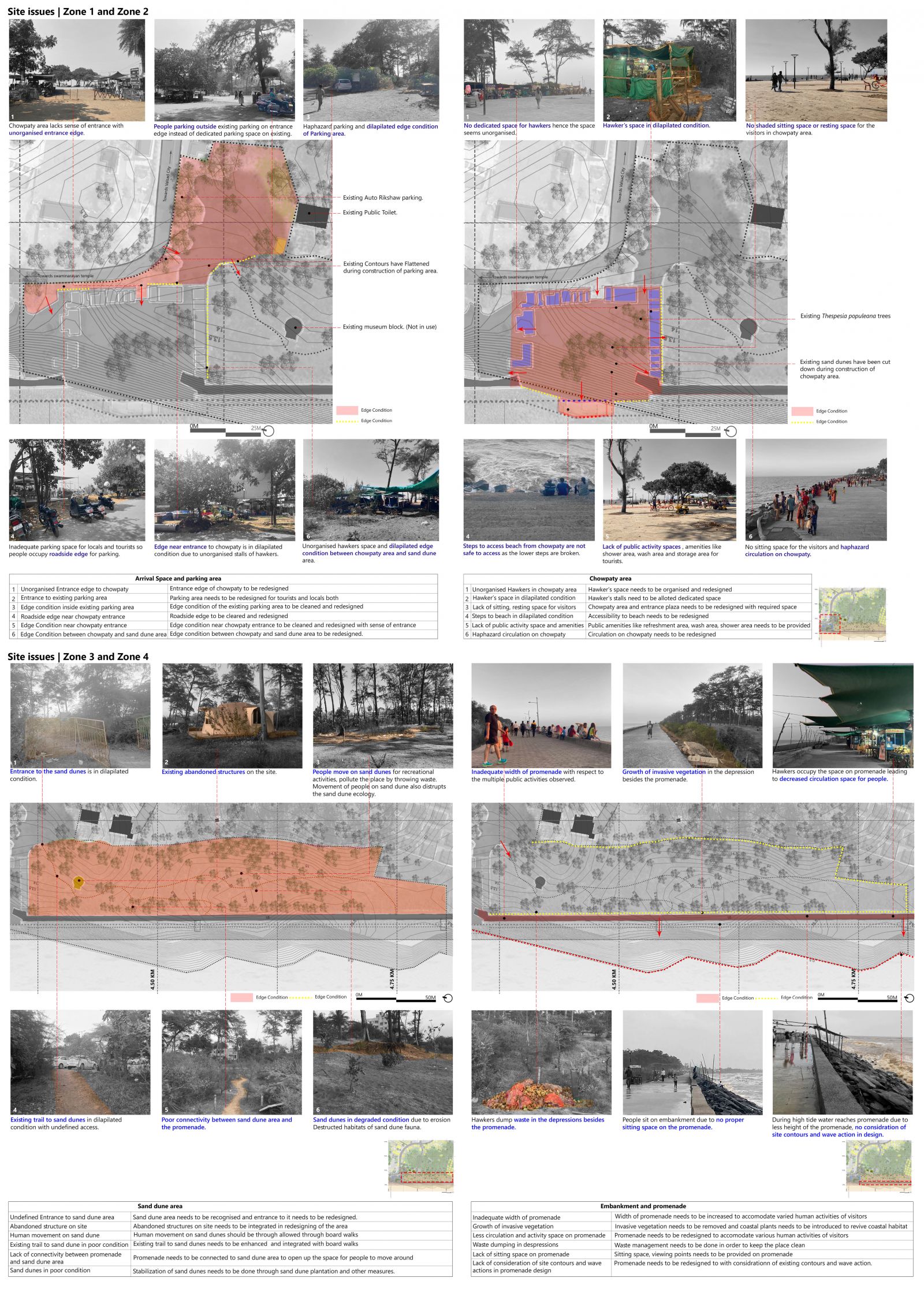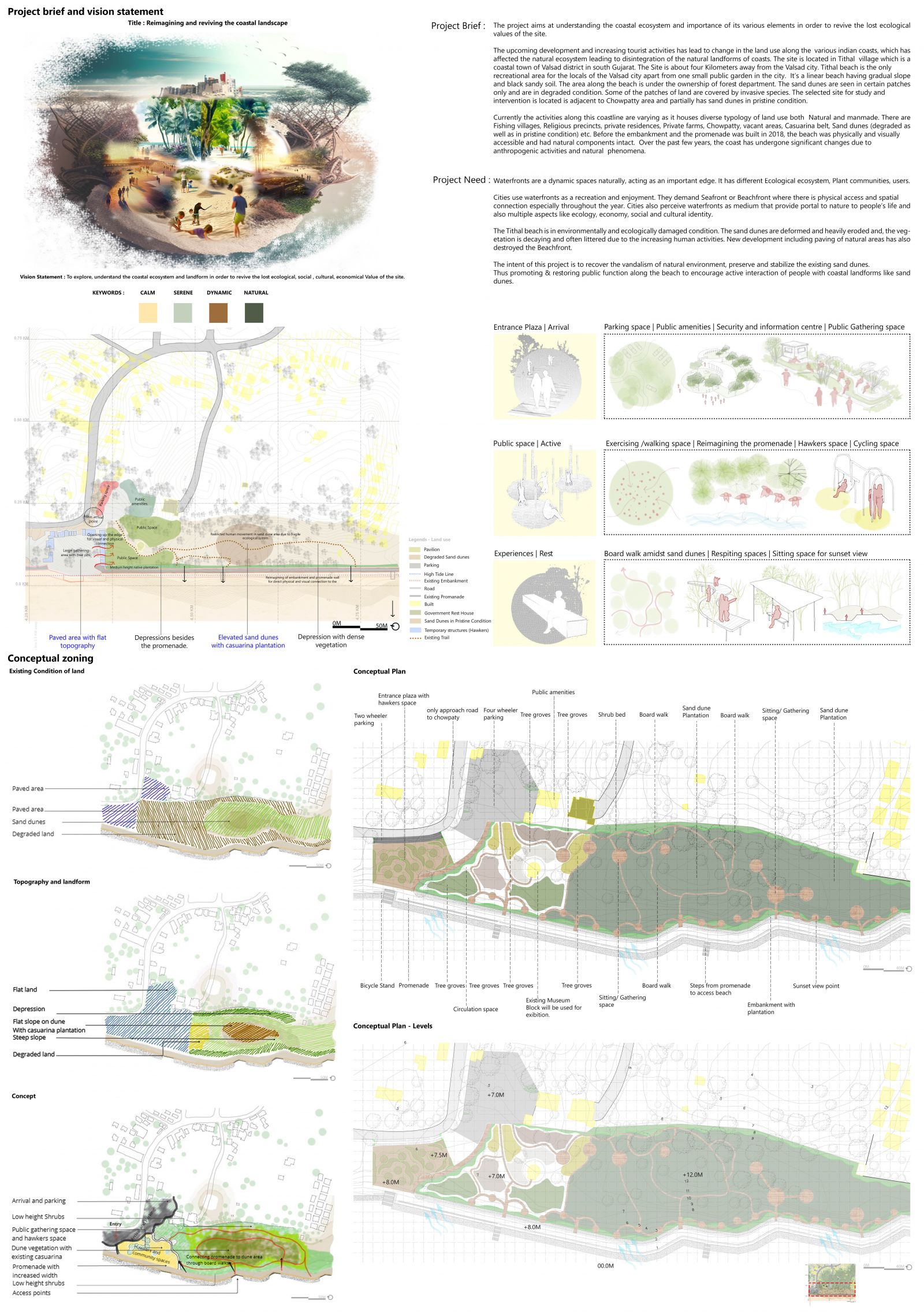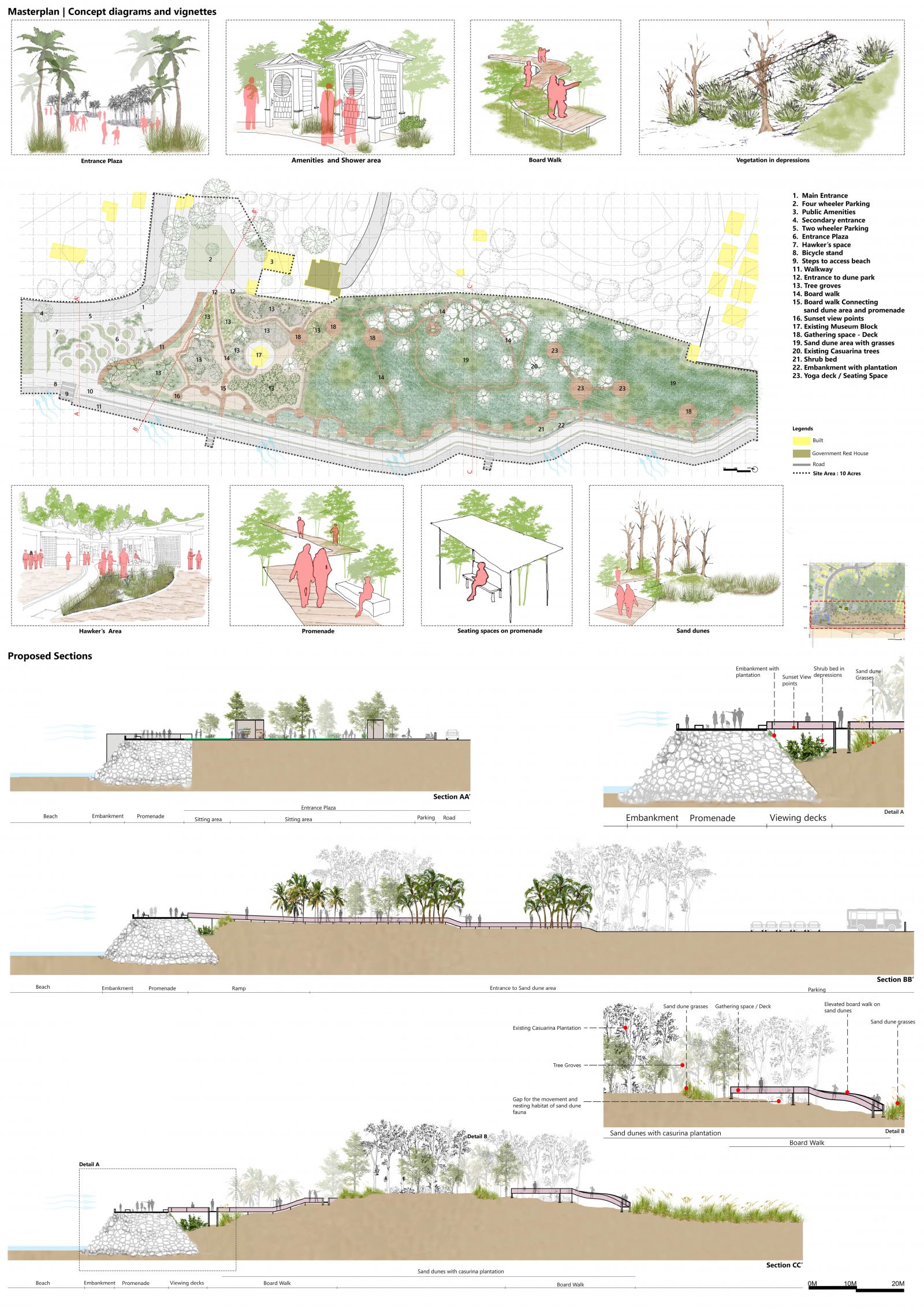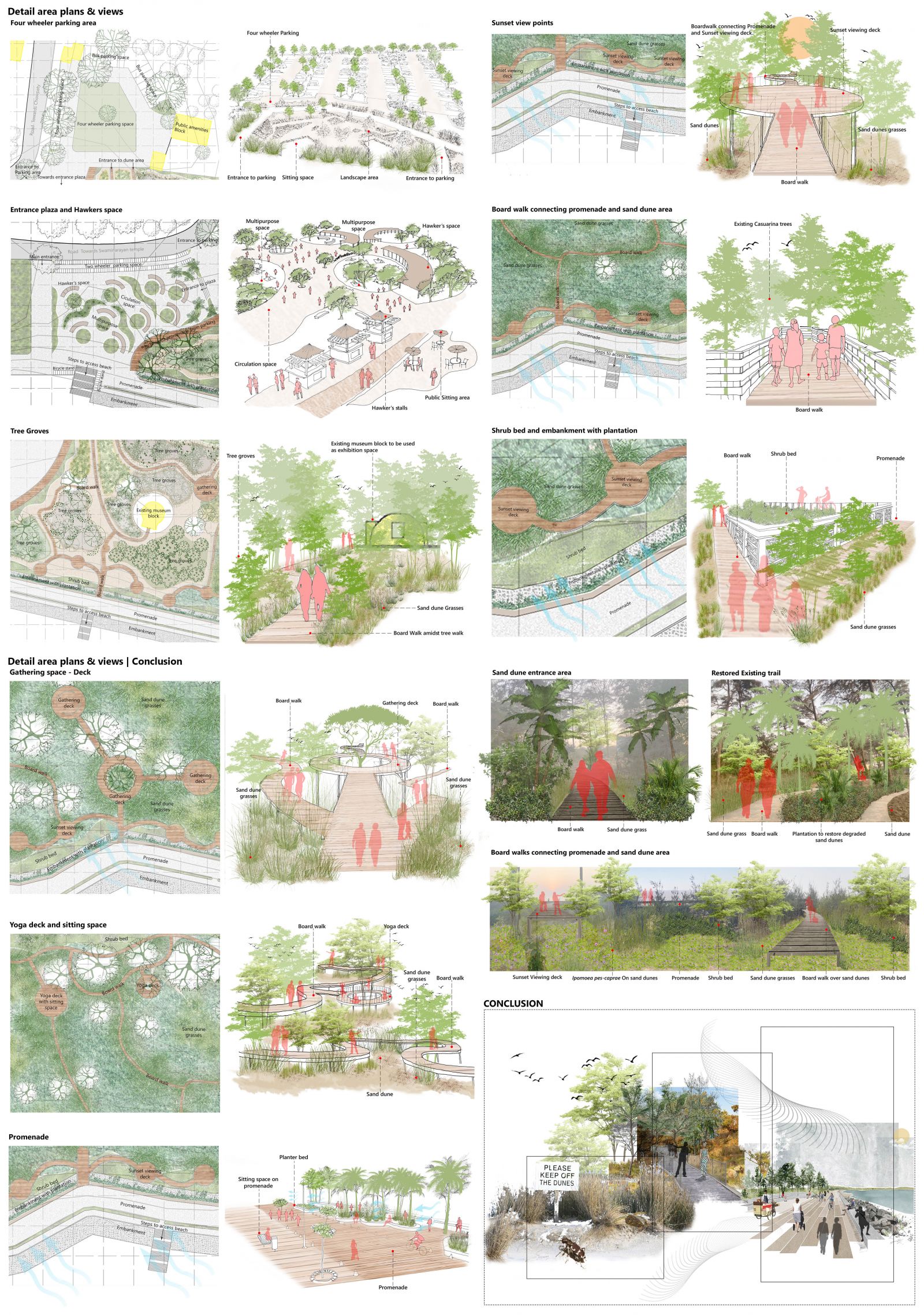Your browser is out-of-date!
For a richer surfing experience on our website, please update your browser. Update my browser now!
For a richer surfing experience on our website, please update your browser. Update my browser now!
Coastal Ecosystems are functional units in which biotic and abiotic components interact dynamically. Also these coastal waterfronts play a very important role for the cities and village situated in its immediate context. The upcoming development and increasing tourist activities has lead to change in the land use along the various Indian coasts, which has affected the natural ecosystem leading to disintegration of the natural landforms along the coastal belts. The site is located in Tithal village which is a coastal town of Valsad district in south Gujarat. The Site is about four Kilometers away from the Valsad city. Tithal beach is the only recreational area for the locals of the Valsad city apart from one small public garden in the city. It’s a linear beach having gradual slope and black sandy soil. The area along the beach is under the ownership of forest department. The sand dunes are seen in certain patches only and are in degraded condition. Some of the patches of land are covered by invasive species. The selected site for study and intervention is located adjacent to Chowpatty area and partially has sand dunes in pristine condition. Currently the activities along this coastline are varying as it houses diverse typology of land use both Natural and manmade. There are Fishing villages, Religious precincts, private residences, Private farms, Chowpatty, vacant areas, Casuarina belt, Sand dunes (degraded as well as in pristine condition) etc. Before the embankment and the promenade was built in 2018, the beach was physically and visually accessible and had natural components intact. Over the past few years, the coast has undergone significant changes due to anthropogenic activities and natural phenomena. The project aims at understanding the coastal ecosystem and importance of its various elements specifically sand dunes in order to revive the lost ecological values of the site. Hence the project is an attempt to restore the degraded sand dune and stabilize the existing sand dunes by creating a sand dune park in order to allow people to explore, acknowledge, interact with nature and become aware about the sand dune ecosystem without disturbing the natural ecology of the site.
View Additional Work